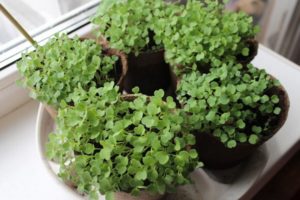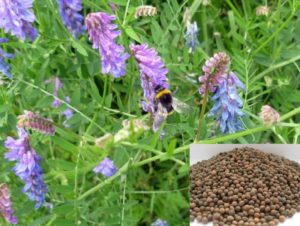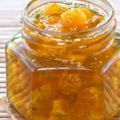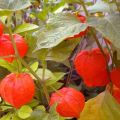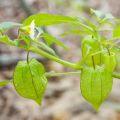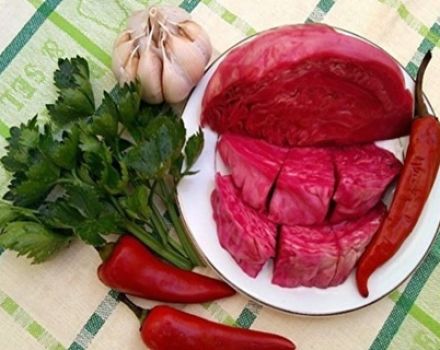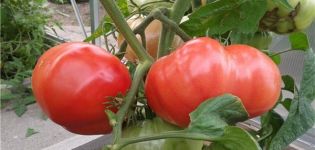Useful properties and harm of strawberry physalis, types and methods of application
Strawberry Physalis is an exotic plant native to South America. Relatively recently, it attracted the attention of gardeners and began to be grown in vegetable gardens. The fruits outwardly resemble ordinary peppers or tomatoes, but their taste is different - they resemble strawberries, raspberries and pineapple at the same time. In addition to its unusual taste, strawberry physalis also has useful properties.
Description and types of physalis
Physalis is a perennial and annual plant of the Solanaceae family. This family includes many other species that have long been cultivated by humans and used for food. These are potatoes, eggplant, vegetable and paprika, tomato, black and ordinary nightshade and others. This is a thermophilic culture that does not tolerate cold weather (with rare exceptions).
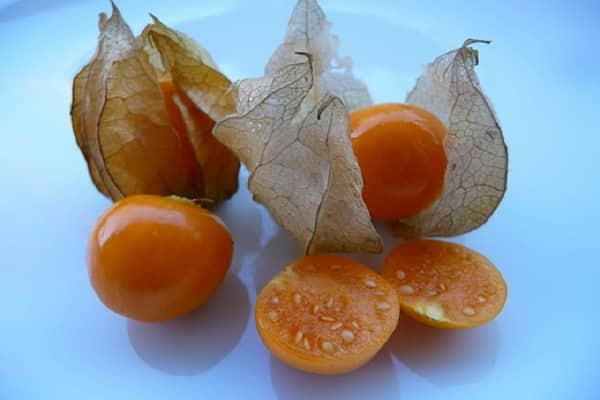
The plant is self-pollinating. The height of the shrub reaches 40-120 centimeters. Fruiting until the first frost, harvesting lasts the whole season. One bush gives an average of 100 fruits.
The stem of the plant is woody, creeping. The fruit is similar to a Chinese lantern - the name is translated from Greek as "bubble", given for its characteristic shape. A berry that resembles a miniature tomato (3 centimeters in diameter) is hidden behind an orange or beige cup of accrete leaves. Fruit color is pale yellow, golden orange, amber or brown. The calyx appears and grows first, and when the fruit-berry ripens, it dries up and loses its hue.
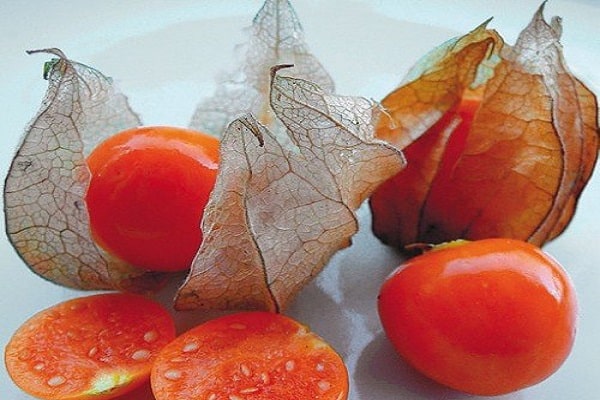
Physalis genus includes 124 species. Most of them are wild shrubs. Only a few species are cultivated for decorative purposes and for consumption:
- strawberry (raisin, pubescent);
- pineapple;
- ordinary;
- glucose-fruited;
- vegetable (Mexican).
In our climatic zone, only 2 varieties have taken root - strawberry and vegetable.
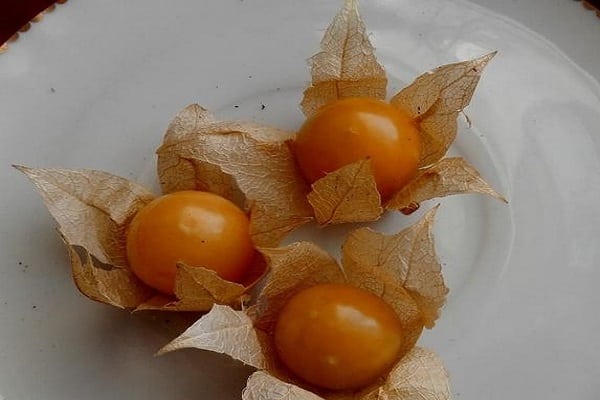
Useful properties of vegetable physalis
Vegetable physalis is not only eaten, but also used in folk medicine. Various drugs are prepared from the fruits. These drugs help with many diseases. The fruits contain:
- carbohydrates;
- pectin;
- sucrose;
- vitamins A and C;
- carotene;
- lycopene;
- physalin;
- minerals;
- organic acids.
The leaves contain:
- carotene;
- cholesterol;
- steroids;
- natural dyes;
- pheno acids.

The fruits of the plant are useful for treatment and prevention:
- pathologies of the gastrointestinal tract;
- elevated temperature;
- kidney disease;
- gout;
- rheumatism;
- diseases of the bronchi and lungs;
- dropsy;
- depriving;
- gastric and hepatic ailments;
- diarrhea;
- hypertension;
- chronic cholecystitis;
- anemia;
- cystitis.
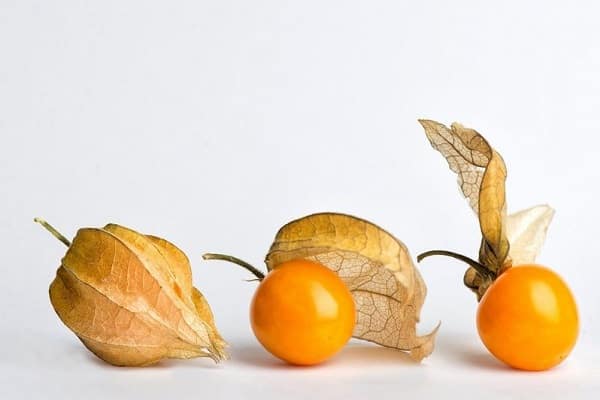
Also, berries are an excellent general tonic. They can be eaten not only raw.Confectionery dishes are prepared from them: jam, jam, marmalade, marshmallow, jam, sweet sauces, used in baking and desserts - there is a choice of confectionery recipes for every taste.
Decoctions from the leaves are used to relieve pressure, and fresh leaves are applied to the wounds (like plantain).
However, the plant brings not only benefits, but also harm. People suffering from stomach diseases should not eat many berries at the same time. For the first time, you can eat no more than 2 fruits, and then slowly increase the dose.
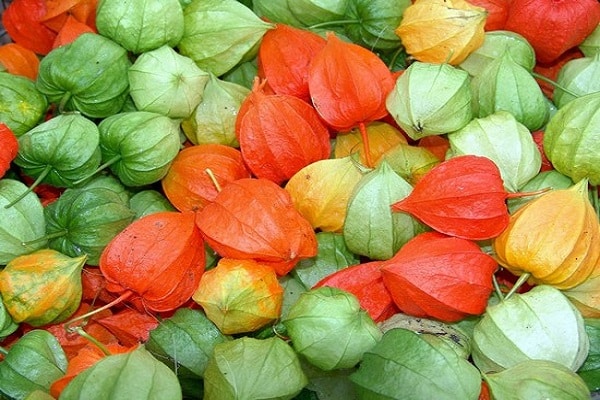
All parts of the plant that are underground are very toxic - incorrect dosage calculation can lead to intoxication of the body!
The benefits and harms of strawberry (berry) physalis
Physalis strawberry is similar in composition to vegetable - but it contains more sucrose. Not only berries, but also leaves and plant stems are rich in nutrients and microelements. Its positive effect on the body is great. Berry Physalis helps in the following cases:
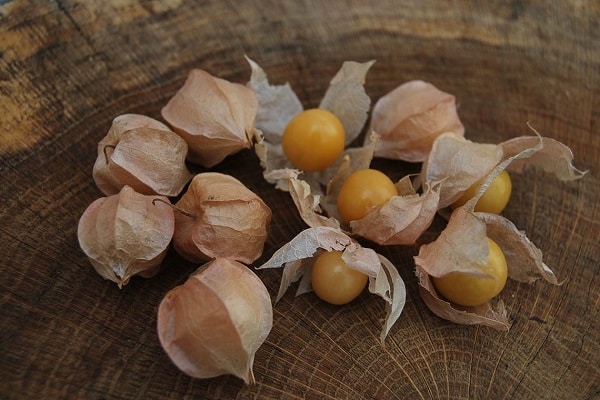
- colds;
- violations of the water-salt and acid-base balance;
- disruption of the endocrine system;
- chronic cough;
- accumulation of salts and kidney stones;
- disorders of the menstrual cycle;
- weakened immunity;
- avitaminosis;
- hypertension;
- dysentery;
- gonorrhea;
- inflammation of the bladder and ureters;
- lichen;
- dropsy;
- dermatoses;
- bronchitis.

For treatment, freshly squeezed juice from berries, decoctions from roots, stems and leaves, infusions on fruits are used. Only berries can be eaten - the rest of the plant is inedible. The dosage for the preparation of potions must be calculated very accurately. The bract is poisonous, it cannot be used in any form!
Also, the berries must be treated with boiling water before use - they are covered with a mucous membrane. If this mucus is swallowed, stomach upset is possible.
Physalis strawberry is contraindicated in people with increased gastric acidity. The plant has no other contraindications.

